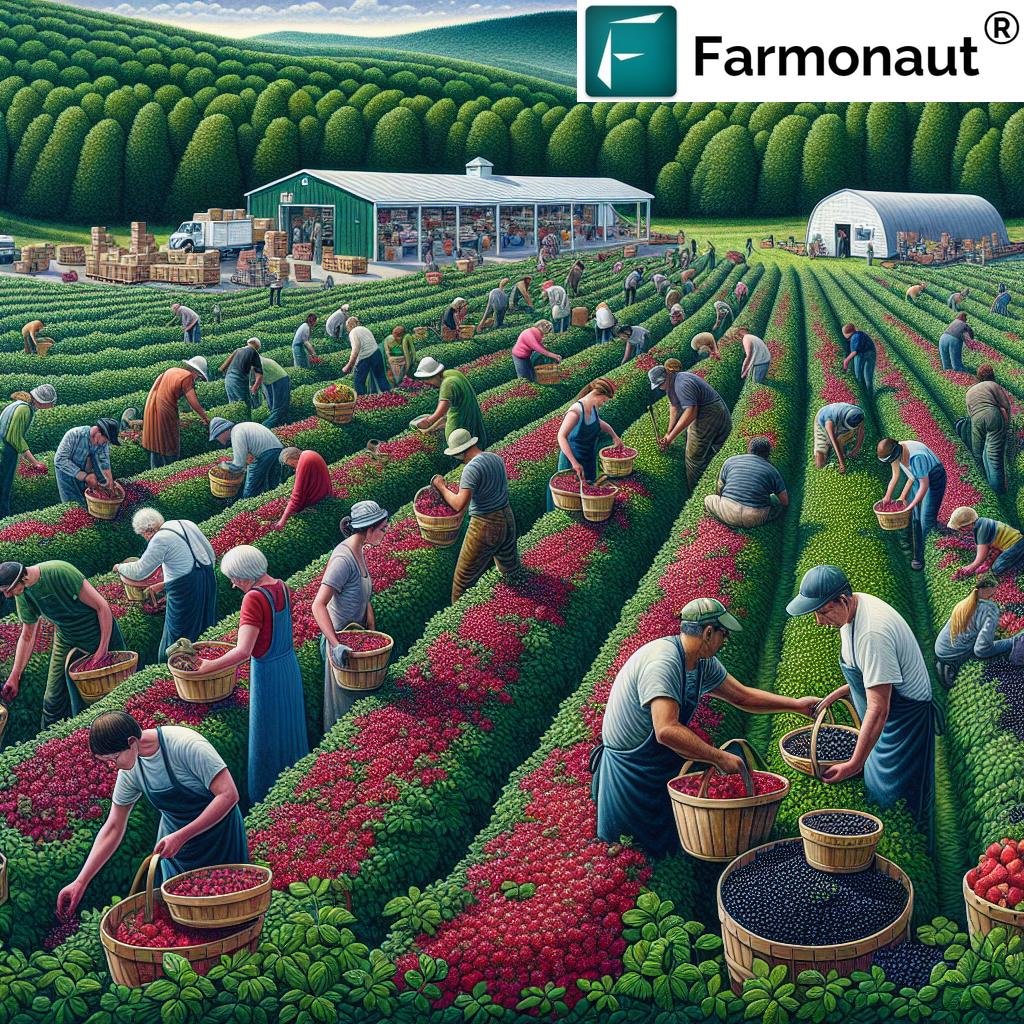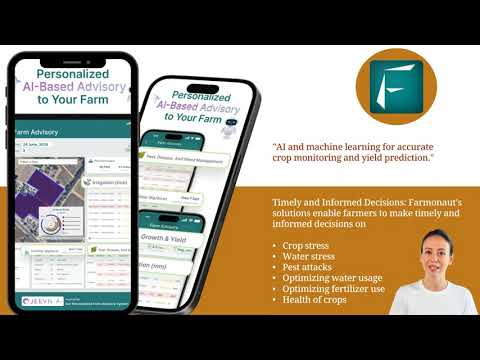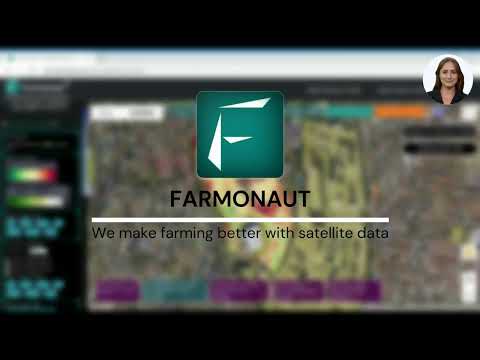Sustainable Farming in Vermont: How Local Food Systems Boost Rural Vitality and Community Resilience
“Vermont’s farm-to-school programs connect over 75% of K-12 students with local food, boosting agricultural economy and nutrition.”
In the picturesque landscapes of Northwest Vermont, a quiet revolution is taking place. The local food systems and sustainable agriculture practices are not just thriving; they’re reshaping the very fabric of rural communities. At the heart of this transformation lies a collaborative effort that supports both food producers and consumers, creating a resilient and vibrant agricultural economy.
As we delve into the world of sustainable farming in Vermont, we’ll explore how community-supported agriculture networks, innovative gleaning initiatives, and farm-to-school programs are not only connecting farmers with new markets but also enhancing community resilience in ways we never imagined.

The Backbone of Northwest Vermont’s Agricultural Renaissance
At the forefront of this agricultural renaissance is the Healthy Roots Collaborative, a program that envisions a strong local agricultural economy supporting growers, producers, and consumers in Franklin and Grand Isle counties. Christine Porcaro, the Healthy Roots supervisor, manages the farm and food business support side of the collaborative. Her role is pivotal in connecting growers and makers to new markets, assisting with grant writing, business and marketing plans, education, and community building.
“The resiliency of our farms and food producers is directly related to the resiliency of our rural communities,” Porcaro emphasizes. This community-minded perspective underscores the collaborative’s mission to support producers, recognizing the direct impact on the health and vitality of local communities.
Gleaning and Food Access: A Year-Round Commitment
Peter Jenkins, the community development and farm-to-school specialist, coordinates Healthy Roots’ year-round food access and gleaning efforts. These initiatives, along with farm-to-school food pipeline efforts and gleaning field trips, form a crucial part of the collaborative’s work in ensuring food security and reducing waste.
Gleaning, the practice of collecting leftover crops after harvest, plays a significant role in the region’s food access programs. This age-old practice has found new life in Vermont, connecting farmers, volunteers, and food-insecure communities in a virtuous cycle of sustainability and support.
River Berry Farm: A Model of Organic Farming and Community Partnership
David Marchant, co-founder and co-owner of River Berry Farm, exemplifies the spirit of collaboration that defines Vermont’s agricultural community. This small organic family business, run by Marchant and his wife Jane Sorensen, has been working with Healthy Roots for years, embodying the interconnected nature of Vermont’s farming network.
River Berry Farm’s partnership with Healthy Roots showcases the power of local connections. Peter Jenkins, now with Healthy Roots, used to work at River Berry, bringing invaluable knowledge of the farm’s layout to gleaning efforts. This relationship has facilitated various initiatives, including educational programs for students from St. Albans’ tech school and volunteer gleaning events.
The farm typically donates about 16,000 pounds of gleaned and visually imperfect organic produce annually, which would otherwise go to waste. This produce finds its way into Healthy Roots’ food assistance programs, ensuring that quality, healthy food reaches those who need it most.
Scaling Up: From Local to Regional Impact
Healthy Roots’ recent move to become part of the Champlain Valley Office for Economic Opportunity (CVOEO) has amplified its impact. This transition has allowed the collaborative to scale up its efforts, better meeting the needs of the region through a larger team and expanded resources.
The collaboration with CVOEO’s Feeding Champlain Valley initiative has created new opportunities for distributing excess produce. When local food access programs have more than they can handle, items from Franklin and Grand Isle counties are delivered to in-network food shelves in Burlington, ensuring that no food goes to waste and more communities benefit from local produce.

Facing Challenges: Climate Resilience and Market Adaptation
“Franklin County and Grand Isle organic farmers face climate challenges, with 30% reporting increased crop losses in recent years.”
Vermont’s farmers are known for their resilience, constantly adapting to changing markets and environmental conditions. Climate change poses a significant challenge, with conversations about climate resiliency becoming increasingly prevalent. Farmers are working with conservation districts and organizations like NOFA (Northeast Organic Farming Association) to develop strategies for the future.
While Franklin and Grand Isle counties have been spared the worst of recent flood damage, farms like River Berry have not been immune to extreme weather events. The May 2023 flooding served as a stark reminder of the vulnerabilities faced by even the most established farms.
Marchant of River Berry Farm highlights the unique challenges of farming: “Weather, finding labor, and competitive markets are just some of the hurdles we face. Most people entering the business world wouldn’t choose farming because you’re dealing with weather-dependent yields, perishable products, and ever-changing markets.”
Despite these challenges, the farming community in Northwest Vermont remains strong, supported by a network of collaborative initiatives and a shared commitment to sustainable practices.
Innovative Solutions for Modern Farming Challenges
In the face of these challenges, farmers and agricultural organizations are turning to innovative solutions to enhance resilience and sustainability. One such solution that’s gaining traction is the use of advanced technology in farm management.
Farmonaut’s crop plantation and forest advisory services offer a cutting-edge approach to sustainable farming. By leveraging satellite imagery and AI-driven insights, farmers can make more informed decisions about crop health, resource management, and climate adaptation strategies. This technology is particularly valuable for organic farmers in Franklin County and Grand Isle, who are at the forefront of climate-resilient farming practices.
Additionally, carbon footprinting tools are becoming increasingly important for Vermont farmers looking to quantify and reduce their environmental impact. These tools allow farmers to track their emissions in real-time, supporting efforts to adopt more sustainable practices and potentially access new markets that value eco-friendly production methods.
Community-Supported Agriculture: The Heartbeat of Local Food Systems
Community-supported agriculture (CSA) networks form the backbone of Vermont’s local food systems. These programs create a direct link between farmers and consumers, fostering a sense of shared responsibility for the land and its produce. CSAs not only provide farmers with a stable income stream but also ensure that community members have access to fresh, locally-grown food throughout the growing season.
The success of CSA programs in Northwest Vermont demonstrates the power of community-driven initiatives in supporting sustainable agriculture. By investing in local farms at the beginning of the season, community members become partners in the farming process, sharing both the risks and rewards of agriculture.
Farm-to-School Initiatives: Nurturing the Next Generation
Farm-to-school programs are another vital component of Vermont’s sustainable food system. These initiatives not only provide students with fresh, nutritious meals but also educate them about the importance of local agriculture and sustainable food production.
In Franklin and Grand Isle counties, farm-to-school programs have created new markets for local farmers while simultaneously improving the health and education of students. These programs often include school gardens, farm visits, and culinary classes that use local ingredients, creating a comprehensive educational experience that connects children to the source of their food.
The Role of Technology in Sustainable Farming
As Vermont’s farmers continue to adapt to changing conditions, technology is playing an increasingly important role in sustainable agriculture. From precision farming techniques to data-driven decision-making tools, farmers are embracing innovation to improve efficiency and reduce environmental impact.
Fleet management solutions are helping larger farms optimize their operations, reducing fuel consumption and increasing productivity. These tools allow farmers to track and manage their agricultural machinery more effectively, contributing to both economic and environmental sustainability.
For farmers looking to access new markets and secure their financial future, crop loan and insurance services backed by satellite-based verification are becoming invaluable. These services provide farmers with the financial security they need to invest in sustainable practices and weather unpredictable seasons.
Building a Resilient Food Future
The story of sustainable farming in Northwest Vermont is one of collaboration, innovation, and unwavering commitment to community well-being. From the tireless efforts of organizations like Healthy Roots Collaborative to the dedication of individual farmers like those at River Berry Farm, the region is demonstrating how local food systems can boost rural vitality and community resilience.
As we look to the future, it’s clear that the challenges facing Vermont’s agricultural community are significant. Climate change, market pressures, and changing consumer preferences will continue to test the resilience of local farms. However, the strong foundation of community support, innovative practices, and technological adoption positions Northwest Vermont’s farmers to not just survive but thrive in the face of these challenges.
Impact of Local Food Systems in Northwest Vermont
| Program/Initiative | Benefits to Farmers | Benefits to Community |
|---|---|---|
| Community-Supported Agriculture Networks | Stable income stream (est. 30% increase) | Fresh, local produce access for 500+ families |
| Gleaning Initiatives | Reduced food waste, tax benefits | 16,000+ lbs of fresh produce for food banks annually |
| Farm-to-School Programs | New market opportunities, 20% revenue increase | Improved nutrition for students, agricultural education |
| Organic Farming Practices | Premium pricing, soil health improvement | Reduced environmental impact, healthier ecosystems |
Conclusion: A Model for Sustainable Agriculture
The success of sustainable farming initiatives in Northwest Vermont offers valuable lessons for rural communities worldwide. By fostering strong connections between farmers, consumers, and local organizations, the region has created a resilient food system that supports both economic vitality and environmental stewardship.
As we continue to face global challenges in food security and environmental sustainability, the collaborative approach demonstrated by Vermont’s farmers and community organizations serves as an inspiring model. It shows that by working together, supporting local producers, and embracing innovative solutions, we can create food systems that are not only sustainable but also vibrant, resilient, and deeply connected to the communities they serve.
The journey towards a fully sustainable and resilient agricultural system is ongoing, but Northwest Vermont’s progress offers hope and practical strategies for communities everywhere. By supporting local farmers, embracing sustainable practices, and fostering strong community connections, we can all play a part in building a healthier, more sustainable food future.
FAQ Section
- Q: What is community-supported agriculture (CSA)?
A: CSA is a model where consumers buy shares in a farm’s harvest before the growing season, providing farmers with upfront capital and sharing in both the risks and rewards of farming. - Q: How do gleaning programs work in Vermont?
A: Gleaning programs organize volunteers to collect excess produce from farms that would otherwise go to waste. This produce is then distributed to food banks and other community organizations. - Q: What challenges do organic farmers face in Franklin County and Grand Isle?
A: Organic farmers in these regions face challenges including climate change impacts, market competition, and adapting to changing consumer preferences. - Q: How are farm-to-school programs benefiting Vermont communities?
A: Farm-to-school programs provide fresh, local food to students, educate them about agriculture, and create new market opportunities for local farmers. - Q: What role does technology play in sustainable farming in Vermont?
A: Technology is helping Vermont farmers improve efficiency, manage resources better, and adapt to climate challenges through tools like precision agriculture, satellite monitoring, and data-driven decision-making.
As we conclude our exploration of sustainable farming in Vermont, it’s clear that the future of agriculture lies in community-driven, technologically-enhanced, and environmentally conscious practices. The resilience and innovation demonstrated by Vermont’s farmers and agricultural organizations offer a beacon of hope and a practical roadmap for creating sustainable food systems worldwide.
Earn With Farmonaut: Join our affiliate program and earn 20% recurring commission by sharing your promo code and helping farmers save 10%. Onboard 10 Elite farmers monthly to earn a minimum of $148,000 annually—start now and grow your income!
For developers interested in integrating agricultural data into their own applications, check out our API and API Developer Docs.






